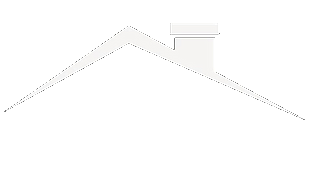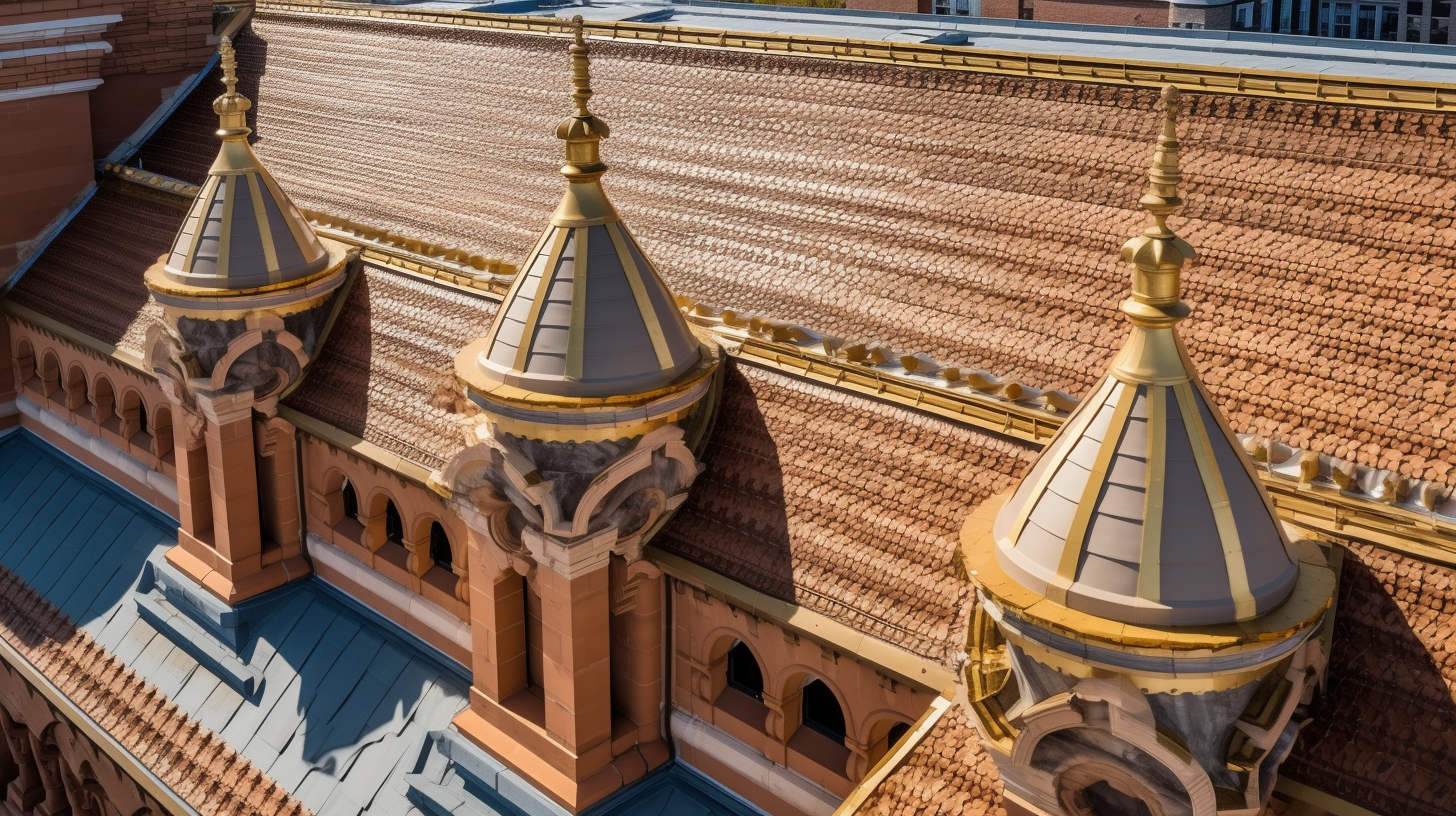Are you responsible for maintaining a government landmark roof? If so, you hold a vital role in preserving the heritage and history of your community.
Government landmark roofs are not just functional structures; they are symbols of the past that offer a glimpse into a time before ours. As such, they require special care and attention to ensure they remain intact for future generations to admire and appreciate.
To achieve this, it is important to adhere to historical preservation guidelines to maintain the authenticity and integrity of the landmark roof. These guidelines provide a framework for identifying, preserving, and restoring elements of the roof that are historically significant.
While following these guidelines can present unique challenges, collaborating with preservation experts can help ensure that the job is done right. By doing so, you are not only preserving a physical structure but also a piece of history that holds cultural and social significance.
Understanding the Significance of Government Landmark Roofs
You may not realize it, but government landmark roofs hold a significant amount of history and heritage that must be preserved for generations to come. These roofs are not just any ordinary roofs; they are designed with elements that reflect the culture and history of the time they were built.
The design elements of these roofs are carefully chosen to reflect the values and beliefs of the society during that era. For example, the Capitol building in Washington, D.C. features a dome roof that symbolizes the unity of the states in the USA.
The cultural impact of government landmark roofs cannot be overstated. These roofs serve as a symbol of the identity and heritage of a nation and its people. They represent the values, beliefs, and aspirations of a society and provide a tangible connection to the past. They are a testament to the creativity and ingenuity of the architects, builders, and craftsmen who worked on them.
Therefore, it’s of utmost importance to preserve these roofs for future generations, so they can appreciate and learn from the history and heritage that they represent. This is where historical preservation guidelines come into play.
The Importance of Historical Preservation Guidelines
When it comes to historical preservation guidelines, it’s crucial to maintain historical accuracy, ensure structural integrity, and adhere to modern safety standards.
You must ensure that the original design and materials used are accurately preserved to maintain its historical significance.
Additionally, it’s important to guarantee that the structure is safe and sturdy for the public to use, while still retaining its historical charm.
By following these guidelines, you can help preserve our nation’s historic landmarks for generations to come.
Maintaining Historical Accuracy
As we strive to maintain the historical accuracy of the government landmark roofs, it’s important to remember that certain materials and techniques used in the past may seem archaic and outdated by today’s standards. However, restoration techniques must be chosen carefully to ensure that the authenticity of the structure is preserved. The use of modern techniques and materials may detract from the historical significance of the building and diminish its value as a cultural landmark.
Therefore, it’s crucial to consult historical preservation guidelines to ensure that the materials and techniques used for restoration are consistent with the original design and construction.
When it comes to historical accuracy, it’s important to consider authenticity concerns. This means that the materials used for repairs and restoration must match the historical period of the building. For instance, if a roof was constructed with slate tiles in the 19th century, then the slate tiles used for repair or replacement must be of the same type and quality.
This approach ensures that the historical significance of the roof is preserved, and that the roof remains true to its original design. With this in mind, it’s essential to ensure the structural integrity of the roof while adhering to these preservation guidelines, as we’ll discuss in the subsequent section.
Ensuring Structural Integrity
Making sure the roof is sturdy is crucial to keeping the building safe and sound. Structural analysis is an essential part of ensuring its structural integrity. It involves a comprehensive and detailed inspection of the roof’s condition and performance.
The analysis includes assessing the roof’s load-bearing capacity, checking for any signs of wear and tear, and identifying any potential structural defects or damage. The material suitability is another factor to consider when it comes to ensuring the roof’s structural integrity.
It is essential to use the appropriate materials that will withstand the test of time and weather conditions. The suitability of the materials used will also affect the roof’s performance and durability. Therefore, it’s crucial to choose materials that are compatible with the building’s historical design and function.
Ensuring the roof’s structural integrity is crucial for maintaining the building’s historical significance and preventing any potential hazards. Adhering to modern safety standards is the next step in preserving the government landmark roofs.
Adhering to Modern Safety Standards
To ensure the safety of the building, it’s important to follow modern safety standards for the roof. Balancing aesthetics and safety may not always be easy, but it’s crucial to adhere to safety guidelines to prevent any potential hazards.
Here are some key points to keep in mind when implementing modern safety standards for government landmark roofs:
- Conduct regular inspections to identify any potential safety hazards.
- Use high-quality and durable materials that can withstand harsh weather conditions.
- Implement new technology, such as drones or sensors, to monitor the roof’s condition remotely.
- Train staff on proper safety protocols and procedures to prevent accidents.
By adhering to modern safety standards, you can ensure the longevity and preservation of the building while also maintaining the safety of those who visit or work inside.
The next step is adapting to unique challenges that may arise during the preservation process.
Adapting to Unique Challenges
Amidst the unique challenges faced, preserving historical government landmark roofs requires a careful balance between maintaining the authentic design and ensuring structural safety. Creative solutions are often necessary to preserve the original design, while also adhering to modern safety standards. However, budget constraints can make it difficult to implement these solutions without sacrificing either the historical integrity or safety of the roof.
One of the main challenges faced is the need to adapt to the unique design and materials of each historical roof. Many government landmark roofs were constructed using materials and techniques that are no longer commonly used. This can make it difficult to find replacement materials that match the original design, while also meeting modern safety standards. Additionally, many historical roofs were not designed to accommodate modern technologies such as HVAC systems, which can create additional challenges when trying to ensure structural safety. Despite these challenges, preserving historical government landmark roofs is essential to preserving our cultural heritage and history.
| Challenges | Solutions |
|---|---|
| Unique design and materials | Finding replacement materials that match the original design, while also meeting modern safety standards. |
| Lack of modern technology | Creative solutions to ensure structural safety while preserving the historical integrity of the roof. |
| Budget constraints | Prioritizing which solutions to implement based on available funds, while still maintaining the safety and historical integrity of the roof. |
| Limited access for repairs | Developing strategies for accessing and repairing hard-to-reach areas while minimizing damage to the historical structure. |
| Limited maintenance history | Conducting thorough inspections and research to develop a maintenance plan that preserves the historical integrity of the roof while ensuring its structural safety. |
To ensure that these challenges are met, collaborating with preservation experts is essential. They can provide valuable insight into the historical significance of the roof and offer creative solutions to preserve its integrity while ensuring its safety. By working together, the collaborative team can overcome the unique challenges of each historical government landmark roof and help to preserve our cultural heritage for future generations.
Collaborating with Preservation Experts
Adapting to the unique challenges of historical preservation can be a daunting task. However, with the help of preservation experts, you can ensure that your government landmark roofs are preserved for future generations.
Collaborating with these experts can help you understand the preservation techniques and restoration process needed to maintain the authenticity of your landmark roofs. Preservation experts have the knowledge and expertise to guide you through the restoration process. They can help you identify the unique characteristics of your government landmark roofs and develop a restoration plan that adheres to historical preservation guidelines.
With their assistance, you can ensure that your landmark roofs are restored to their original condition while preserving the heritage and history they represent. Looking to the future, it’s essential to recognize the importance of historical preservation.
By collaborating with preservation experts, you can ensure that your government landmark roofs are preserved for future generations to appreciate and admire.
Looking to the Future
As you gaze into the future, you’ll be amazed at the potential impact of preserving your government landmark roofs. Not only will you be preserving the heritage and history of your community, but you will also be implementing sustainability practices and taking advantage of technological advancements. By adhering to historical preservation guidelines, you can ensure that your roofs will be functional for years to come while also reducing your environmental impact.
One way to incorporate sustainability practices into your preservation efforts is to use eco-friendly materials. For example, you can use recycled or sustainable materials for repairs and replacements. Additionally, you can implement green roofing systems that promote energy efficiency and reduce stormwater runoff. Technological advancements also offer a wide range of new possibilities for preserving government landmark roofs. For instance, drones and other advanced technologies can be used for inspections and repairs, reducing the need for manual labor and increasing safety. By embracing these advancements, you can ensure that your government landmark roofs will remain a source of pride and inspiration for generations to come.
| Sustainability Practices | Technological Advancements | |||
|---|---|---|---|---|
| Use eco-friendly materials | Use drones for inspections and repairs | |||
| Implement green roofing systems | Embrace advanced technologies for preservation |



